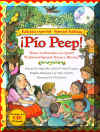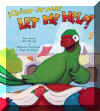 Author : Alma
Flor Ada
Author : Alma
Flor AdaPreschool - 2nd Grade
 Author : Alma
Flor Ada
Author : Alma
Flor Ada
Preschool - 2nd Grade
The Malachite Palace

 The
Malachite Palace, Hardcover, English, Book, Alma
Flor Ada, Preschool - 2nd Grade,
9780689319723,
$16.95 Watch
The
Malachite Palace, Hardcover, English, Book, Alma
Flor Ada, Preschool - 2nd Grade,
9780689319723,
$16.95 Watch
The
Malachite Palace, Jordis
Star, and The
Unicorn of the West, English,
CD, Alma
Flor Ada,
Preschool - 2nd Grade, $19.95 Listen
$202.68 for the Story Collection Green Books and CDs English Set, Including 20%-Off, Free Shipping, and No Sales Tax : 10 Hardcover English Books, 5 Softcover English Books, 1 English Storytelling CD, and 1 Bilingual Storytelling CD
 This
original fairy tale celebrates the importance of freedom and the need
to take responsibility for one’s own freedom.
Although the queen, the governess, and the lady-in-waiting all believe that the
young princess is too delicate and refined to play with the neighborhood
children, the princess herself decides otherwise…
This
original fairy tale celebrates the importance of freedom and the need
to take responsibility for one’s own freedom.
Although the queen, the governess, and the lady-in-waiting all believe that the
young princess is too delicate and refined to play with the neighborhood
children, the princess herself decides otherwise…
Author’s Note : The word “malachite” fascinated me since childhood. In the beautiful poem “A Margarita” the great Nicaraguan poet Rubén Darío describes a king who had “un palacio de diamantes, un kiosco de malaquita y un rebaño de elefantes” [a palace made of diamonds, a malaquite kiosk and an elephant herd]. The whole world he painted delighted me, but it was the “malachite kiosk” that intrigued me. Not knowing what malachite was, the sound of the word was in itself fascinating. Many years later I had the opportunity to visit the extraordinary museum of The Hermitage in St. Petersburg, and there, to my surprise, was a magnificent malachite kiosk. Did Darío heard about this outrageous gift to a tzar? Or was the imagination of the poet the inspiration for the kiosk? I probably will never know, but haunted by the beauty of word and stone, one day I simply began writing: “There once was a princess who lived in a malachite palace…” As the story evolved, the values I hold true: the value of freedom and the responsibilities it demands, the richness of diversity, enriched the story. And what a pleasure to have an extraordinary artist as Leonid Gore create such delicate and inspiring illustrations that make the book itself a gem.
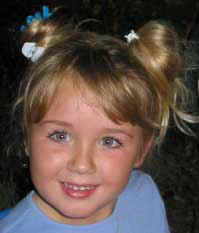 Listen
to Vienna Rose read The Malachite Palace to you. A marvelous
example of the magical encounter between a child and books that we wish for all
children. And here's an earlier
reading by Vienna Rose.
Listen
to Vienna Rose read The Malachite Palace to you. A marvelous
example of the magical encounter between a child and books that we wish for all
children. And here's an earlier
reading by Vienna Rose.
Watch The Cape Breton Post : Ballet Bras d’Or will present The Malachite Palace, an original fairy tale by Alma Flor Ada published by Del Sol Books, tonight at Strathspey Place. The story celebrates the importance of freedom and the need to take responsibility for one’s own freedom. Although the queen, the governess, and the lady-in-waiting all believe that the young princess is too delicate and refined to play with the neighbourhood children, the princess herself decides otherwise. The show starts at 7:30 p.m. Admission is $15 for adults, and $7 for students. For tickets or more info, contact the Strathspey box office at 945-5300.
A Washington DC Puppet Show : “How do you escape an invisible cage? A princess and a little bird find the answer together in this captivating shadow puppet fairy-tale. Adapted from the picture book by Alma Flor Ada and performed in Spanish and English.” If your thoughts on “shadow puppetry” conjure disfigured recreations of “rabbits” and “dogs” sprung from inept hands, this elegant adaptation of The Malachite Palace will reset your expectations for the form. The story, a parable on matters of kid-freedom and companionship, tracks the bubbly wanderings of a bird – no, pajaro! – as it flits between a lonely princess’s chamber and the world of children and play beyond. The crisp, 35-minute production deftly blends the shadow-boxed goings-on within the castle with “exterior” scenes performed with marionettes onstage. This contrast between the flat, largely black-and-white world of the palace, where the child’s minders smother her in material comfort but deprive her of life’s simple joys, and the three-dimensional, all-color puppet-utopia outside, highlight the princess’s crummy life. A window provides her only glimpse into an alternate existence, one punctuated with the sights and sounds of laughter, horseplay, and birdsong. But the queen and her henchwomen object! That window exists not for wistful voyeurism, but to carry fresh air – para la salud! – into the home. So they plant shrubs to obstruct the view and muffle the sounds of childhood from afar. It’s a downer, sure, but soon a canary breezes into the palace, piquing the girl’s hopes for a playmate and a break from her daily routine. Her excitement triggers the play’s most beautiful and disquieting sequence, in which the castle’s snobby worrywarts surround the little bird and imprison it. With this the story heightens its central, if familiar question… Does the caged bird sing? The puppetry isn’t always flawless, but the show’s few Dolemite moments – where shadowy fingertips pop unintended into view – hardly detract from the illusion on screen. In a sense, those wayward digits, on top of Wendy Nogales’s distinctive voice characterizations, lend an extra layer of humanity to a story that preaches sensitivity and inclusiveness. The effort’s all the more impressive, actually, when you consider that the four puppeteers are working in an area not much larger than a bath tub. Their movements, combined with the intricate cutouts backed by bright white light, bring life to the action in classic fashion. The result is a simple, pretty production that, shockingly for Fringe, is suitable for the entire family. And if you manage to sneak into the Spooky Universe through its 16th Street entrance, past no discernible ticket booth, and down the stairs to a door labeled “Keep Doors Closed,” a curative to overwrought, high-concept summer entertainment awaits. But I recommend that you take the alleyway over to the official entrance and buy a ticket – The Malachite Palace is a show worthy of your patronage.
Off to Great Places : Whimsical pictures keep this fairytale-like story about the freedom of a little princess trailing along. Comparing the little princess's situation to a beautiful singing bird she has would be a great comparison to do with a class. There are significant parallels in the story that discuss how important freedom and choice is in life. The best part about the book are definitely the pictures that look as though light is shown on each one. Great for doing an author study of Alma Flor Ada because it is very different from the majority of books that she writes. Ages: 4-8
Reviews : Publishers
Weekly : Gore's (The Pomegranate Seeds) acrylic and ink illustrations, spun like
gossamer and lit with an inner radiance, lend their magic to a tale about a
lonely princess. Confined to the castle and forbidden to play with the children
outside the gates (whom the queen, the governess and the lady-in-waiting deem
common), the princess is delighted when a little yellow bird flies in through
the window, filling the palace with "a light and joyful music." After it is
captured and placed in a cage, however, the little bird ceases to sing. Only
when she sets it free, turning its cage into a bird feeder so that it and its
friends may come and go at will, does it sing joyfully again. Seeing the bird's
happiness inspires the princess to seek her own, and she ventures for the first
time beyond the palace gates to play with the other children. Ada (Mediopollito)
puts a bit of a fresh spin on the tired metaphor of the bird in the gilded cage
by having the girl take responsibility for her own freedom. But it is Gore's
airy, diaphanous illustrations that lift the tale above the sum of its parts.
Studies in the refinements of light and texture, they appear overlaid with a
delicate, filmy gauze, and their weightless elegance imbues the translucent
green walls of the malachite palace and the sun-dappled interiors with a
mysterious, ethereal beauty. Ages 4-8.
School Library Journal : PreSchool-Grade 3 A lovely picture book in the grand
tradition of European fairy tales. Locked away in her malachite castle, a lonely
little princess yearns for the one thing she does not haveAa friend. Then one
day, a tiny yellow bird with a beautiful song visits the palace, and the
princess's lady-in-waiting and governess lock it in a silver cage. Trapped, the
bird stops singing, until the princess removes the cage door. The bird flies
away singing a joyful song and soon returns, accompanied by many friends, to the
open cage the child has filled with food and placed on the balcony. Following
the bird's example, the princess ventures outside the palace doors, where she
joins the children laughing and playing. Although the story is not highly
original, youngsters will enjoy its gently familiarity. The artwork, lovingly
crafted by a leading Russian children's book illustrator, is striking. Softly
muted acrylic and ink drawings depict a dreamlike land while expressing the
princess's isolation. A predictable, yet comforting, read.ADenise E. Agosto,
formerly at Midland County Public Library, TX.
Booklist : Ages 4-8. An original fairy tale/fable, translated from Spanish,
tells a touching story of a privileged child in a gilded cage, who sets herself
free. The princess lives in splendor in the malachite palace, but she is shut in
there. She hears the laughter of children playing in the fields outside the
gates, but she is forbidden to join the "common, ignorant" crowd. Gore's
full-page, acrylic-and-ink pictures, in rich, shimmering shades of green and
red, show the angelic child nearly overwhelmed by her flamboyant care-givers:
the arrogant queen, the repressive governess, the protective lady-in-waiting.
Then a singing bird flies into the child's room; the ladies lock him into a
silver cage, and he stops singing--until the princess opens the cage and lets
him fly away. She transforms the empty cage into an open archway, and finally
she opens the ornate palace gates for herself and runs outside to play with the
children. The theatrical illustrations provide a lavish setting for the sturdy
child's struggle to leave home. Hazel Rochman.
From Kirkus Reviews : From Ada (The Lizard and the Sun, 1997, etc.), an original
fairy tale that is predictable, elevated to beauty by Gore's paintings. A
princessa childis isolated in a palace, away from the ``rude,'' ``ignorant,''
and ``common'' children who play outside her gates. One day an exquisite yellow
bird visits her, singing a joyful tune; the princess cages it and its joy fades.
She frees the bird, and eventually frees herself, joining the children outside.
The message is heavy-handed, the telling is without style, the setting is
nondescript. The illustrations, however, are ephemeral: The princess and her
surroundings are depicted in Gore's paintings as if they are seen through gauze.
The angles of the characters' faces, the sharp definition of the cage, the
detailed scrollwork of the windows and gates are all in perfect contrast to the
hazy existence of a friendless princessan isolation based on prejudice and
hearsay, and one to be willingly shattered. (Picture book. 4-8) -- Copyright
©1998, Kirkus Associates, LP.
This is a wonderful picture book, both the writing and the illustrations. It's about the cruelty and foolishness of snobbery. A very sweet little princess is kept inside the palace gates because the queen, the governess and the lady-in-waiting think she is too good to be mixing in with the riff-raff rabble kids outside the gates. She's not happy. One day the queen and her cronies trap a bird that has flown in to the palace but it isn't happy and starts to deteriorate, so the little princess helps it escape. In the process the princess makes a very important change in the way she is treated. The illustrations of this little princess are just perfect and they capture her emotions in such detail. The illustrations glow with a soft light and the deep green walls of the malachite palace add magic to the pictures and also a sort of innocence. This is a book that shows the strength that a child can have when they decide to live up to their true nature and think for themselves. It should help kids see that they can come up with ideas on their own for doing the right thing and that sometimes grown-ups can make mistakes. I love this book. (Terrie Reese, Little Chute, WI, US, Amazon Top 500 Reviewer).
"The Malachite Palace" is a beautiful book about friendship and respect. The little princess is not allowed to play with the common children outside because they are "rude" and "ignorant", according to her lady-in-waiting, governess, and the queen. One day she finds a little yellow bird, and decides to keep it for a friend. But being in the cage makes the little bird weak and sad, and the princess must find a way to set the bird free, and in doing so, show the women that watch over her that she cannot grow or be happy unless she is allowed to have friends. The illustrations in this book are exquisite, almost ethereal. It is a treasure for any children's library, and sure to be a favorite. (N. Bernadsky, Conway, AR, US, Amazon).
“A caged bird will not sing, and a child locked away in a protective castle will not flourish. Ada’s fairytale speaks to the heart and soul of childhood, to the power of truth and freedom. Set off by Gore’s magnificent paintings, this is a near-perfect melding of classic story and artwork.” (Family Life, June/July, 1998)
“A lovely picture book in the grand tradition of European fairy tales. Locked away in her malachite castle, a lovely little princess yearns for the one thing she does not have –a friend. Then one day, a tiny yellow bird with a beautiful song visits the palace, and the princess’s lady-in-waiting and governess lock it in a silver cage. Trapped, the bird stops singing, until the princess removes the cage door. The bird flies away singing a joyful song and soon returns, accompanied by many friends, to the open cage the child has filled with food and placed in the balcony. Following the bird’s example, the princess ventures outside the palace doors, where she joins the children laughing and playing. […] The artwork, lovingly crafted by a leading Russian children’s book illustrator, is striking. Softly muted acrylic and ink drawings depict a dreamlike land while expressing the princess’s isolation. A predictable, yet comforting, read.” (Denise E. Agosto, formerly at Midland County Public Library, TX. School Library Journal, May, 1998)
“[…] This is a fairy tale with a strong young girl who need no magic to make her world better.” (Natalie Soto.On the Shelf – Rocky Mountain News. August, 1998).
Story
Collection Green Books and CDs
:





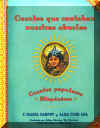






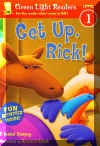


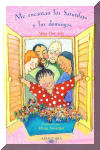







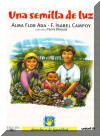
Bilingual
Collection Green Books and CDs :








